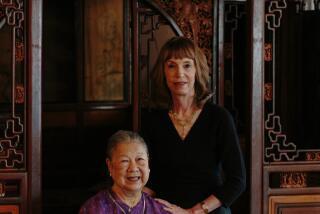NONFICTION - Feb. 6, 1994
THE INNER QUARTERS: Marriage and the Lives of Chinese Women in the Sung Period by Patricia Buckley Ebrey (University of California Press: $45; 332 pp.) History, well-written, can have the excitement and depth of good fiction along with the cultural relevance of a documentary. Most of the time, however, we are treated to names, dates and wilted retellings of events that resonate with our lives about as much as a strangerâs gas bill.
âThe Inner Quarters,â Patricia Buckley Ebreyâs account of the lives of Chinese women during the Sung Period (960-1279), has some fascinating sections. But other parts manage to suck the lifeblood out of even the most titillating subjects, such as adultery and divorce. Some of Ebreyâs best work concerns husband and wife relations. Since it was common for a man to bring concubines into his household, particularly when his wifeâs physical beauty began to fade, jealousy was a real problem. The writing in this section is insightful and vibrant. Another strong chapter concerns women and their work making cloth, an extremely important aspect of the economy.
A word of caution: It seems Ebrey is trying to look at Chinese culture during the Sung Period without the framework of contemporary Western ideas. For example, here are her thoughts on foot-binding: âOne test of our ability to understand the mentality of Sung China is to set aside these modern readings of the symbolism of foot-binding and to try to see how . . . both men and women . . . could have seen tiny bound feet as symbols of beauty rather than subjection.â
Wait a minute, many feminists might reply. In Sung China beauty was subjection. The majority of these women were cripples. One may wish Ebrey would look at this integral part of Sung culture a little more closely.
More to Read
Sign up for our Book Club newsletter
Get the latest news, events and more from the Los Angeles Times Book Club, and help us get L.A. reading and talking.
You may occasionally receive promotional content from the Los Angeles Times.





